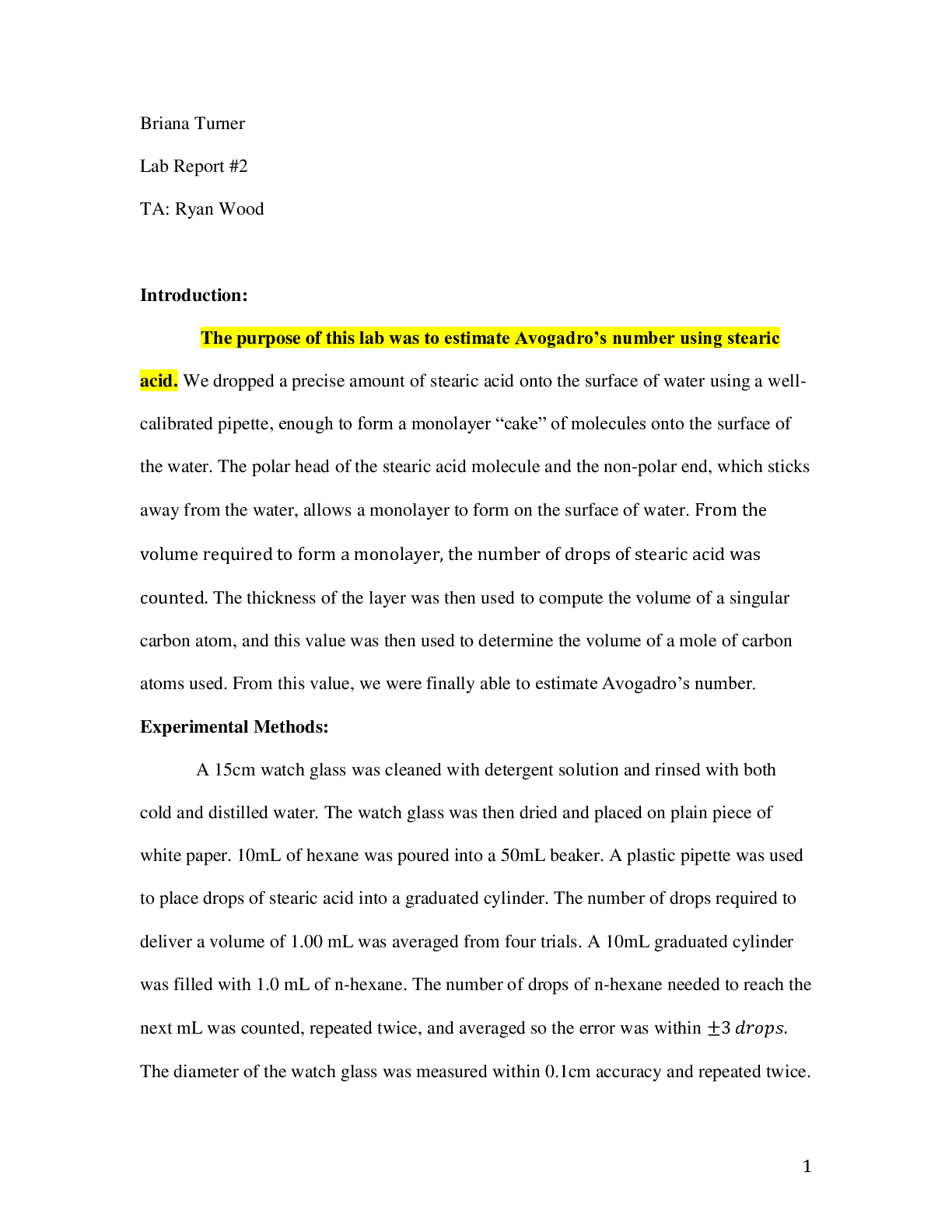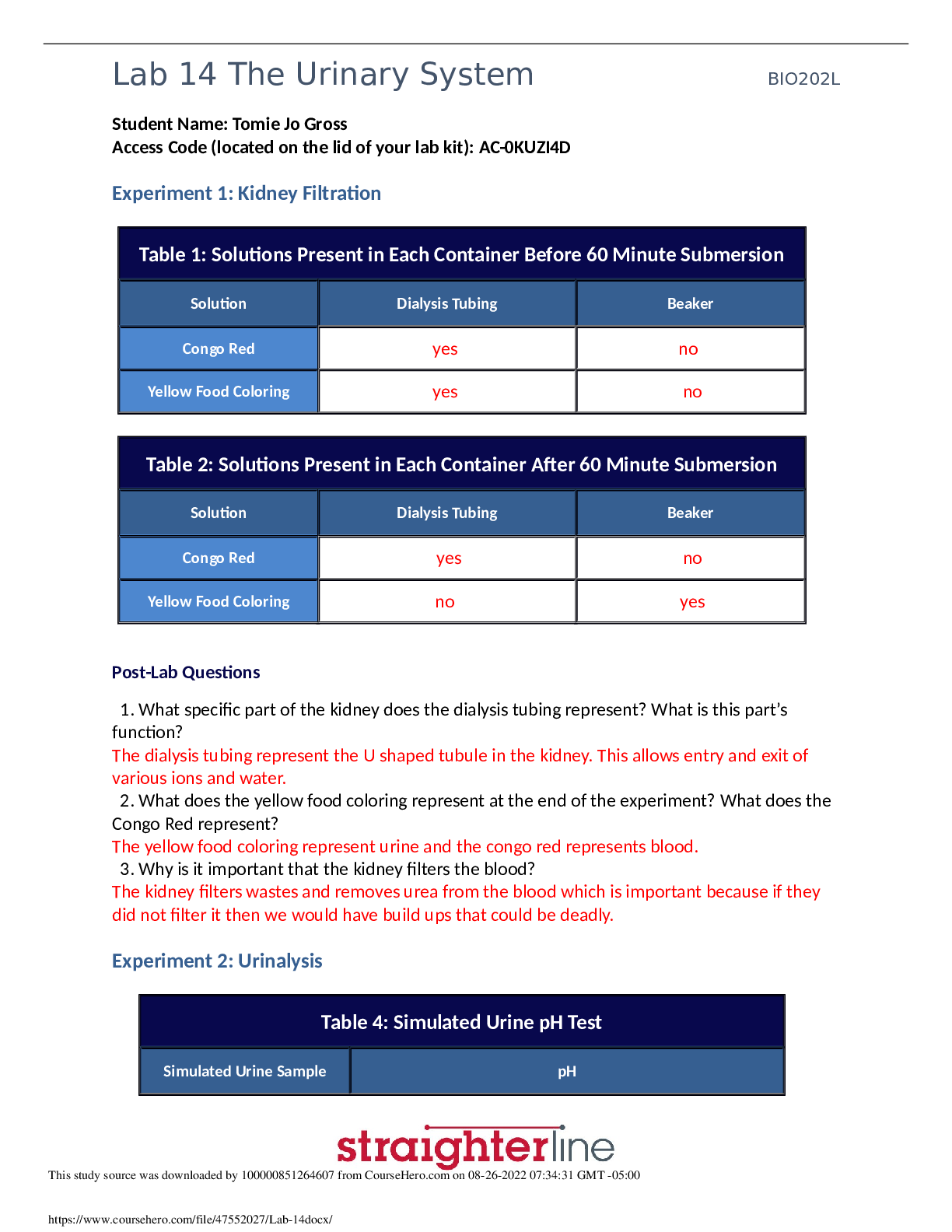Chemistry > Lab Experiment > [LAB EXPERIMENT] Student Exploration Periodic Trends.docx (All)
[LAB EXPERIMENT] Student Exploration Periodic Trends.docx
Document Content and Description Below
Student Exploration: Periodic Trends Directions: Follow the instructions to go through the simulation. Respond to the questions and prompts in the orange boxes. Vocabulary: atomic radius, electron ... affinity, electron cloud, energy level, group, ion, ionization energy, metal, nonmetal, nucleus, period, periodic trends, picometer, valence electron Prior Knowledge Questions (Do these BEFORE using the Gizmo.) 1. On the image at right, the two magnets are the same. Which paper clip would be harder to remove? The paper clip would be harder to remove is B. 2. Which magnet would be most likely to attract additional paper clips? B would be most likely to attract additional paper clips. 3. What is the relationship between the thickness of the book and the ability of the magnet to hold on to and attract paper clips? The thicker the book the low the ability of the magnet to hold and attract paper clips. The less thickness of the book, the higher the ability for the magnet to attract and hold paper clips. Gizmo Warm-up Just as the thickness of a book changes how strongly a magnet attracts a paper clip, the size of an atom determines how strongly the nucleus attracts electrons. In the Periodic Trends Gizmo, you will explore this relationship and how it affects the properties of different elements. The atomic radius is a measure of the size of the electron cloud, or the region where electrons can be found. To begin, check that H (hydrogen) is selected in Group 1 on the left. Turn on Show ruler. To measure the radius, drag one end of the ruler to the proton in the nucleus and the other end to the electron. Click Save radius to record the value. 1. What is the radius of hydrogen? The radius of hydrogen is 53 pm. Notice that the radius is measured in picometers (pm). A picometer is one trillionth of a meter. 2. On the right side of the Gizmo, select Li. Connect the right side of the ruler to the outermost electron, or valence electron. What is the radius of lithium? The radius of lithium is167 pm. Reproduction for educational use only. Public sharing or posting prohibited. © 2020 ExploreLearning™ All rights reserved This study source was downloaded by 100000803371112 from CourseHero.com on 03-25-2021 07:21:18 GMT -05:00 https://www.coursehero.com/file/84995241/Student-Exploration-Periodic-Trendsdocx/ This study resource was shared via CourseHero.com Activity A: Atomic radius Get the Gizmo ready: ● Check that Atomic radius is selected from the drop-down menu. Question: What factors affect the radius of an atom? 1. Predict: How do you think the radius of an atom will change as you move down a group (vertical column) in the periodic table? The atomic radius of an atom will increase as you move down a group. 2. Collect data: Use the ruler to measure the atomic radii of the group 1 elements. As you do so, count the energy levels (shown as rings of electrons) in each atom. Record in the table. Element H Li Na K Rb Cs Number of energy levels 1 2 3 4 5 6 Atomic radius (pm) 53 167 190 243 265 298 3. Observe: What happens to the radius as you move down group 1? The radius increase as I move down group 1. 4. Explore: Turn off Show ruler. Select Li, and then select Be. Observe the radii of the elements in group 2. Then look at other groups. What pattern do you see? I see that the nucleus is getting bigger and the electron shell of an atom are getting smaller 5. Draw a conclusion: In general, what is the effect of the number of energy levels on the radius of an atom? In general, the atomic radius increases as the group and energy levels increases. 6. Predict: How do you think the radius of an atom will change as you move across a period (horizontal row) in the periodic table? The radius of an atom will decrease as you move across a period. 7. Collect data: Beginning with Na, record the number of energy levels, number of protons, and atomic radius for each element in period 3. Element Na Mg Al Si P S Cl Ar Number of energy levels 3 3 3 3 3 3 3 3 Number of protons 11 12 13 14 15 16 17 18 Atomic radius (pm) 190 145 118 111 98 88 79 71 8. Observe: What happens to the radius as you move across a period? The radius is getting smaller as I move across a period. Reproduction for educational use only. Public sharing or posting prohibited. © 2020 ExploreLearning™ All rights reserved This study source was downloaded by 100000803371112 from CourseHero.com on 03-25-2021 07:21:18 GMT -05:00 https://www.coursehero.com/file/84995241/Student-Exploration-Periodic-Trendsdocx/ This study resource was shared via CourseHero.com 9. Explore: Investigate other periods in the periodic table. Does the same trend occur? Does the same trend occur? Yes, the same trend occurs. Hypothesize why this trend occurs. There is a strong force of attraction pulling the electrons closer to the nucleus resulting with a small atomic radius. 10. Analyze: Consider how the number of protons might affect the size of the electron cloud. A. As you move across a period, are new energy levels added? No. B. What happens to the number of protons in the nucleus as you move from one element to the next across a period? The number of protons in the nucleus as I move from one element to the next across a period increases by 1. C. If the proton number increases while the number of energy levels remains constant, what happens to the attractive force between the nucleus and the electrons? The attractive force between the nucleus and the electrons becomes stronger. D. How does your answer to the previous question explain the trend in radii across a period? The attractive force becomes stronger as protons are added because they make a strong magnetic force and brings the particles closer together, thus the radii become smaller. [Show More]
Last updated: 1 year ago
Preview 1 out of 8 pages
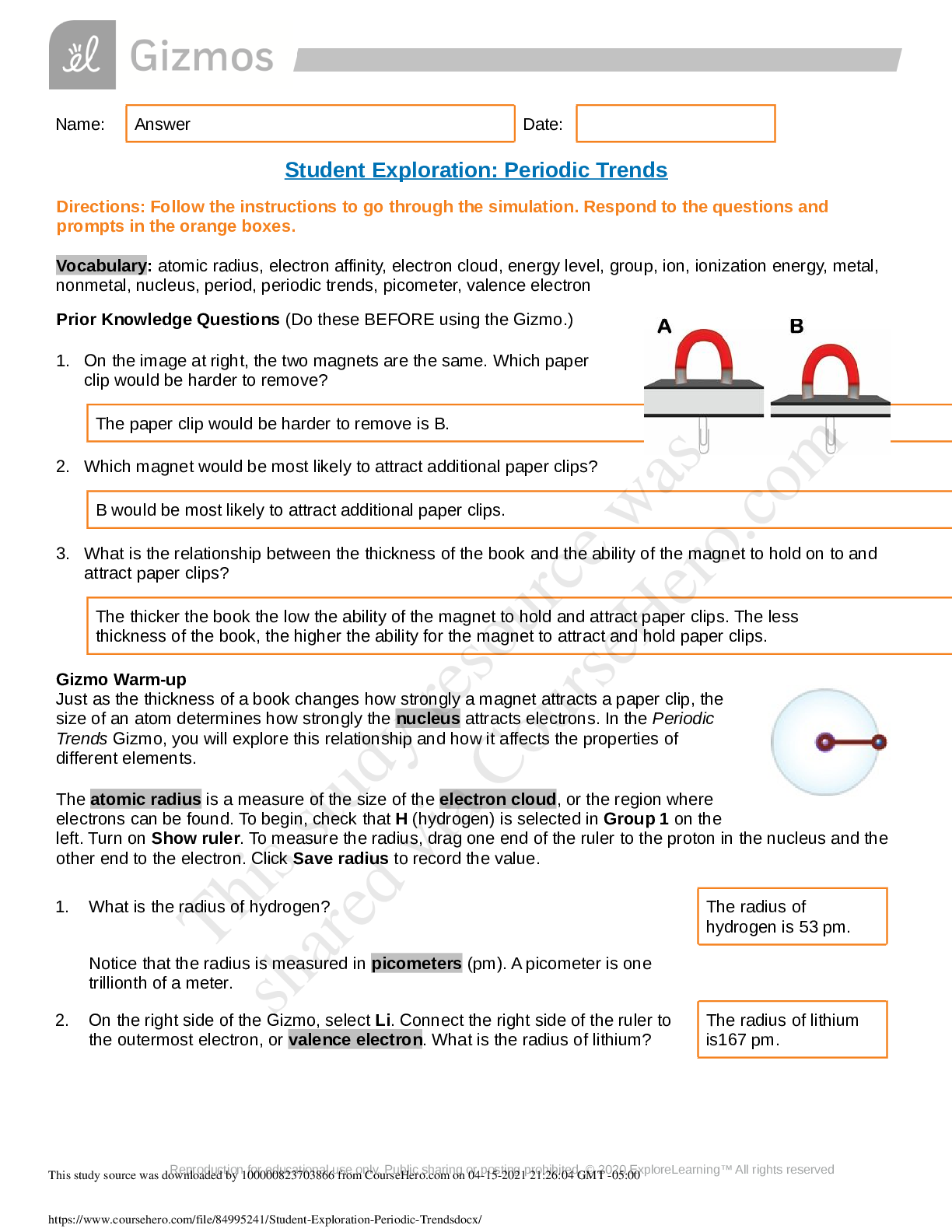
Reviews( 0 )
Document information
Connected school, study & course
About the document
Uploaded On
Mar 25, 2021
Number of pages
8
Written in
Additional information
This document has been written for:
Uploaded
Mar 25, 2021
Downloads
0
Views
164

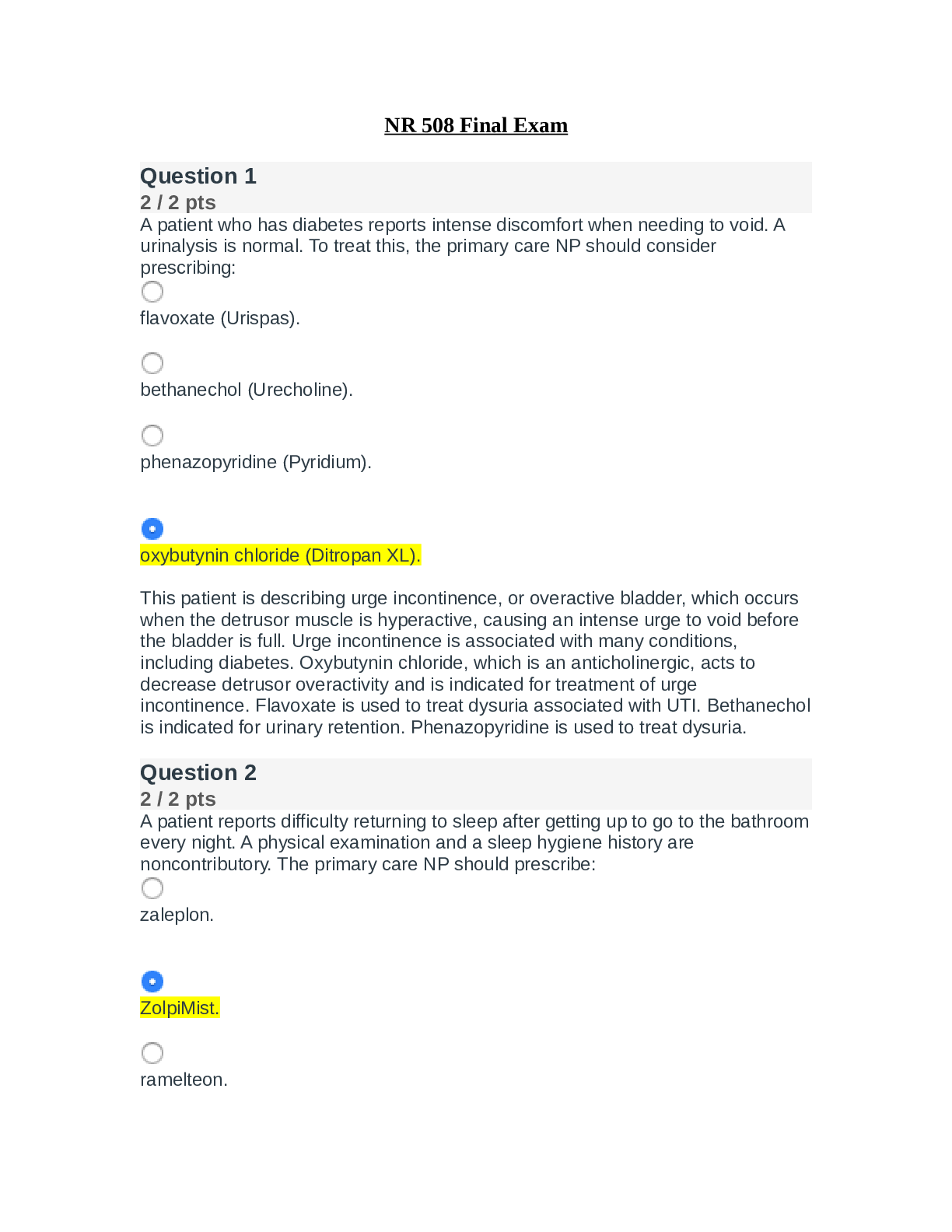

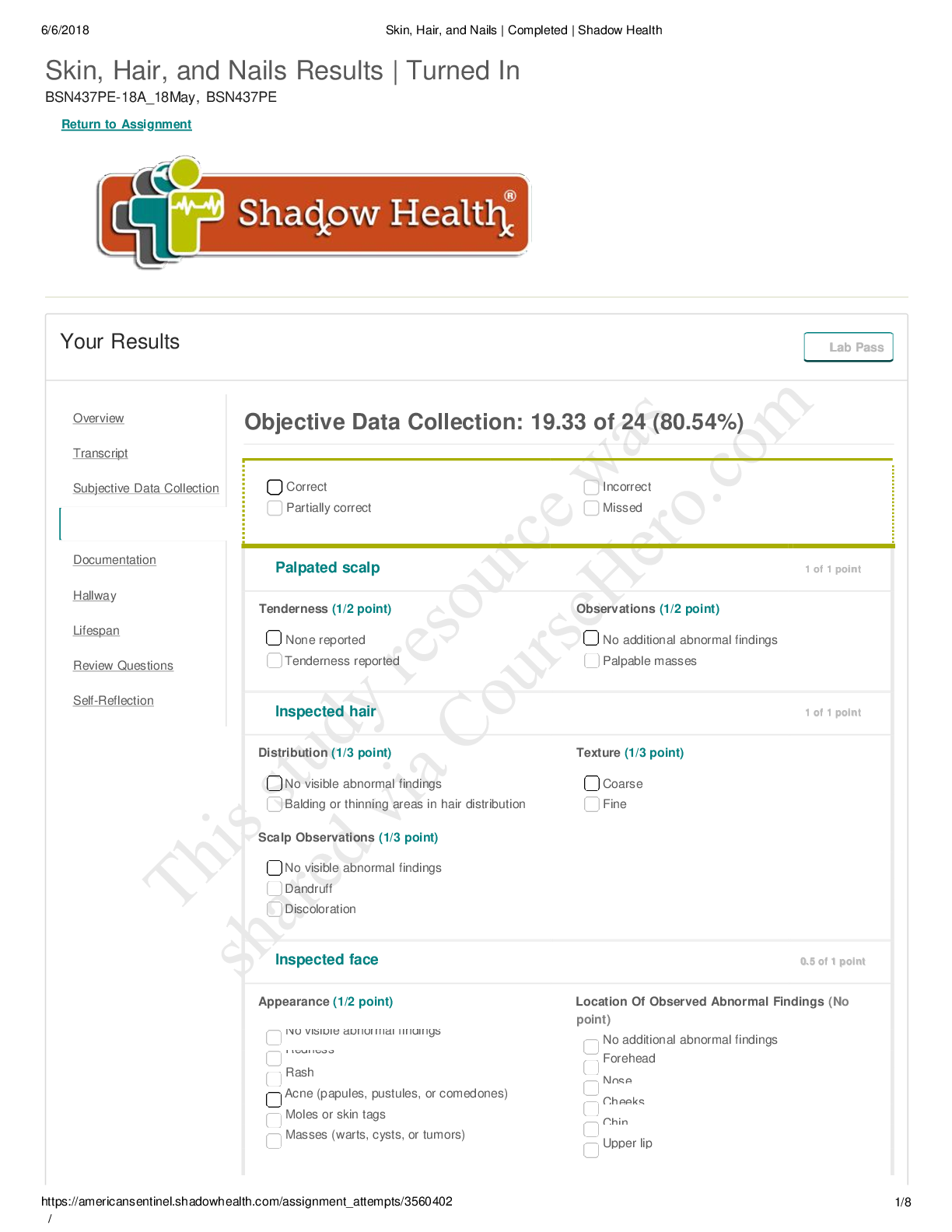
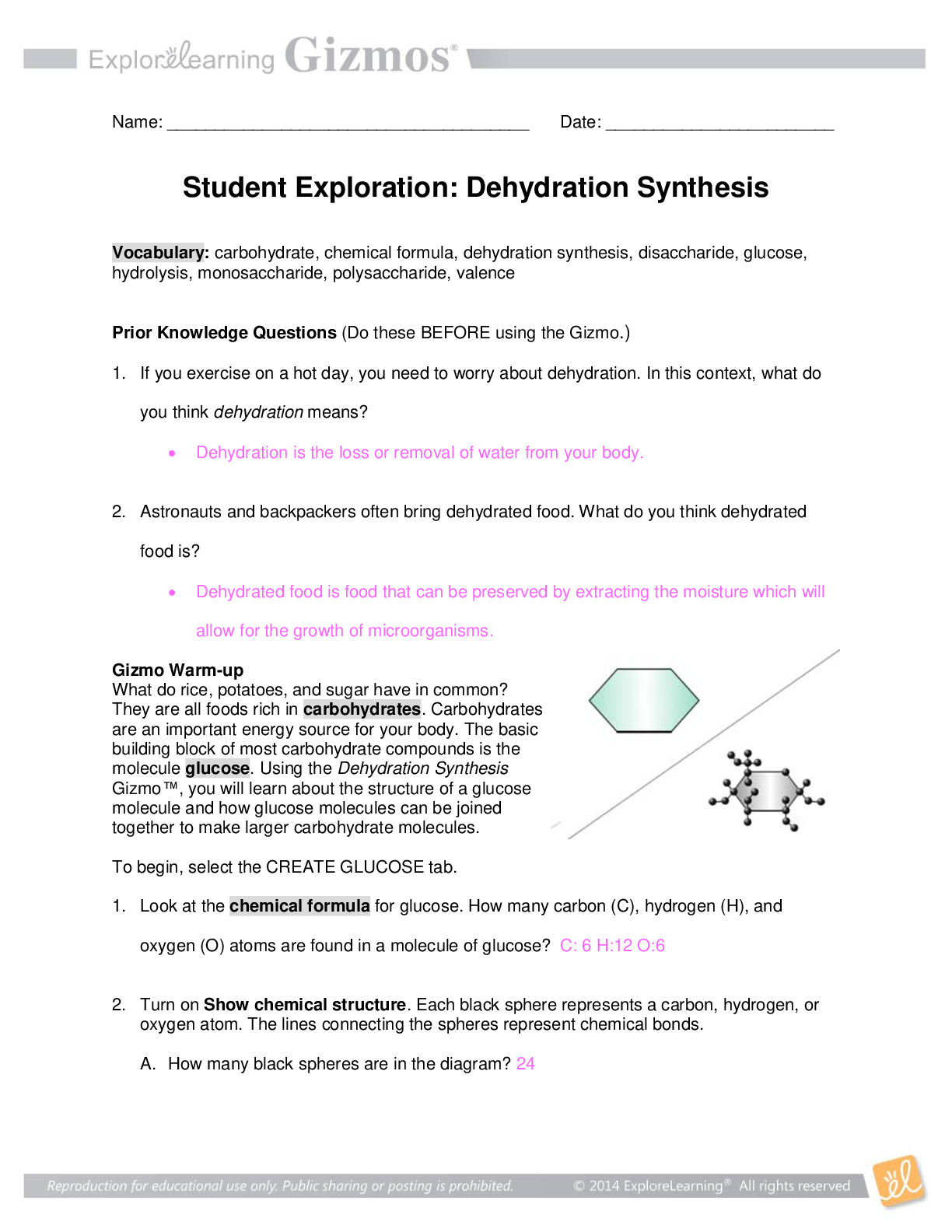




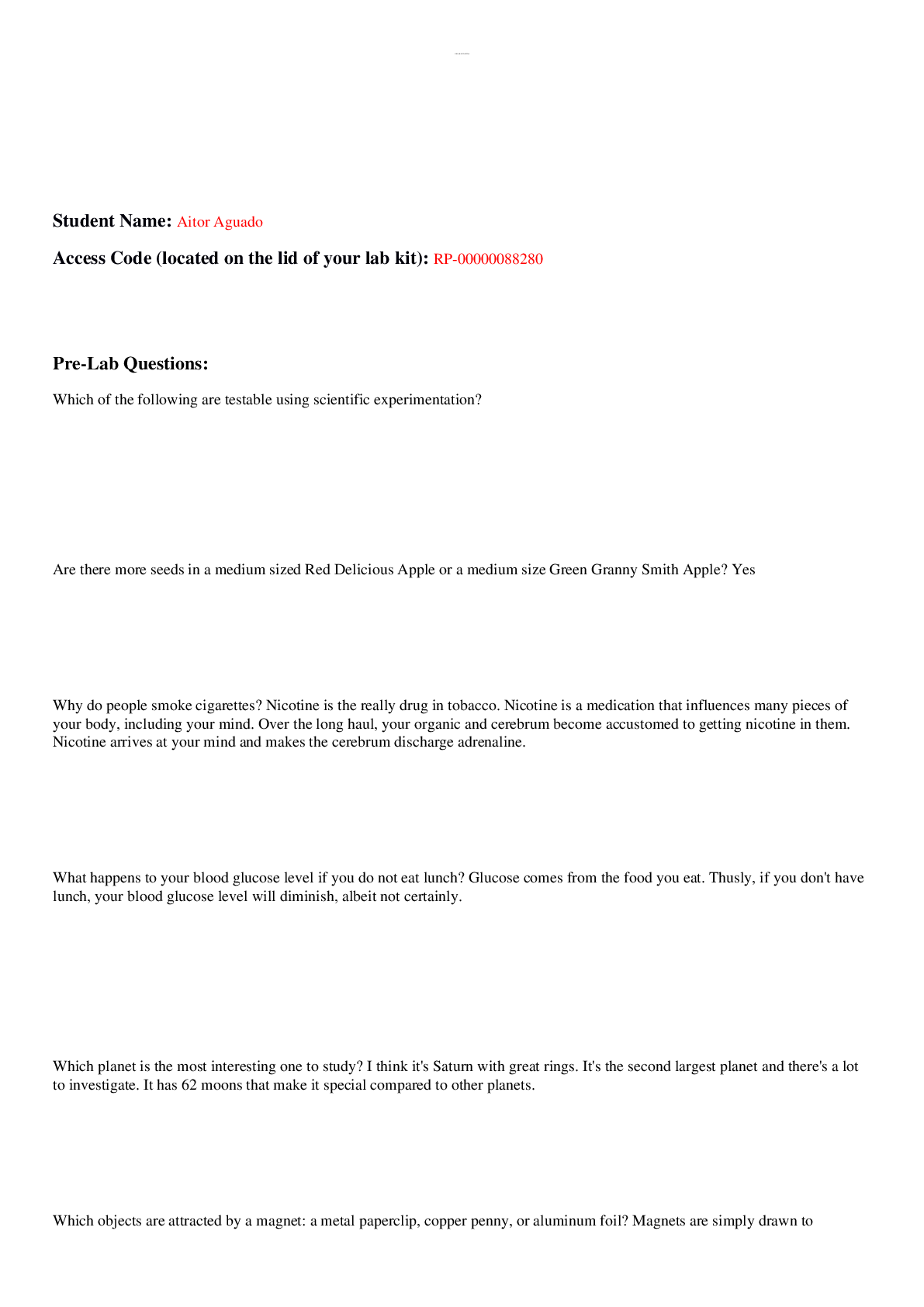
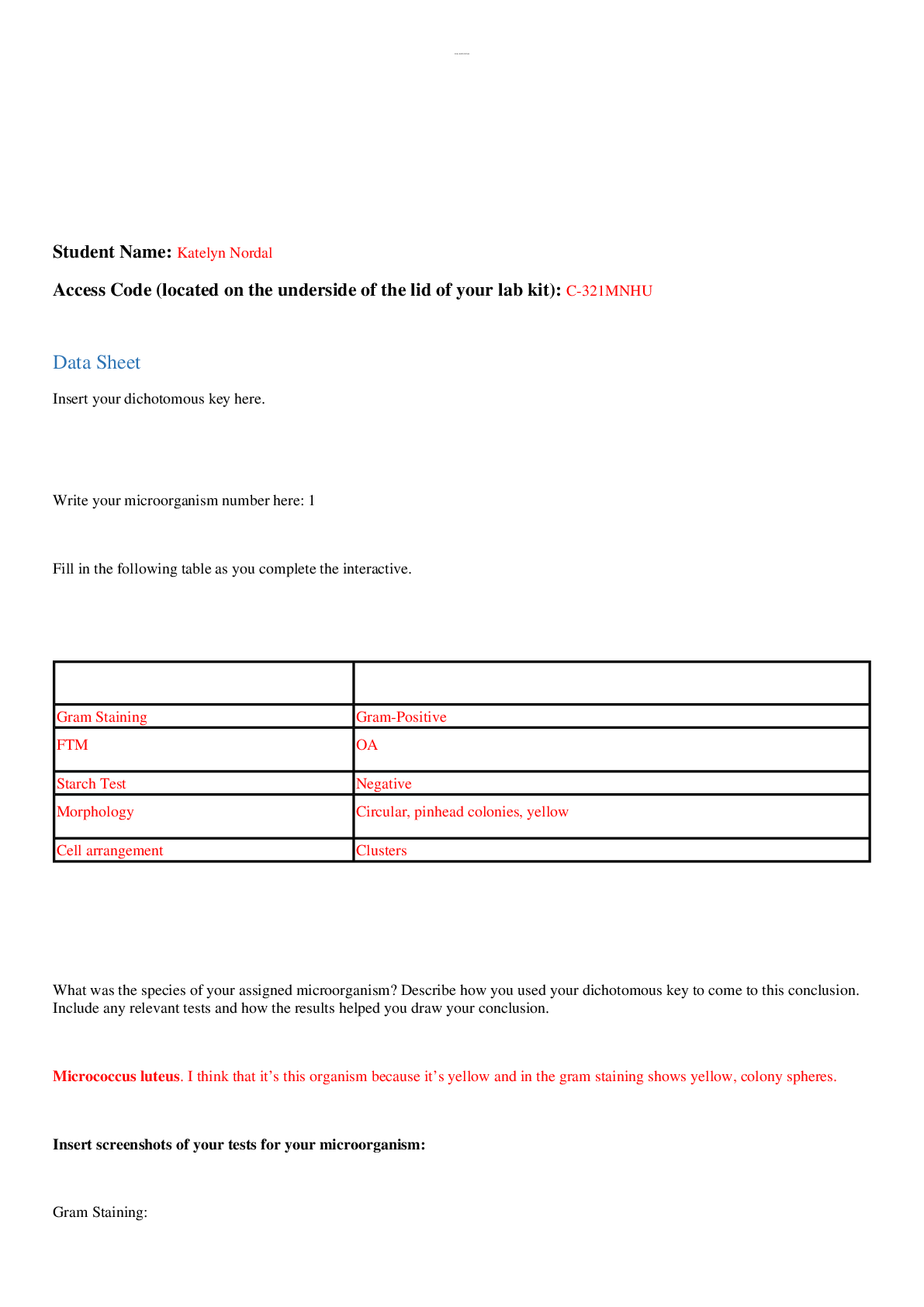



.png)
